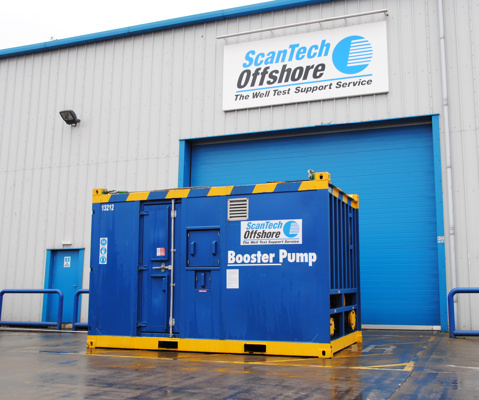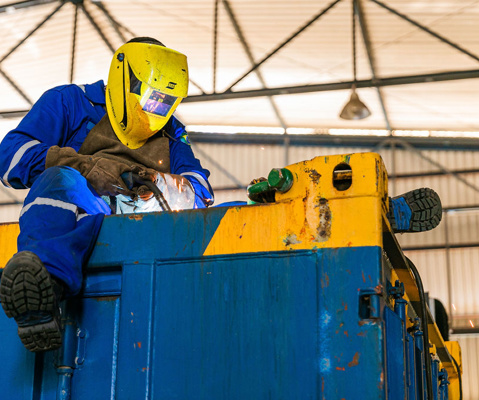Our sea water booster pumps take low-pressure, high-volume suction from our sub-pumps or rig supply and boost its pressure. Our range includes electric, diesel and twin-drive diesel or hydraulic pumps in Zone II and rig-safe formats.

How do they work?
Sea water is pumped around the rig cooling system and exits via strategically positioned nozzles. These nozzles transform the water into millions of optimal-size droplets which refract and scatter the light radiating from the flare. Only a tiny proportion of the heat radiation is absorbed into the water sprawy, and the cooling effect is produced almost entirely via light refraction. This creates a direct correlation between the attenuation required and the volume of water needed - more water equals lighter heat dilution.
Our pumps supply between 2000 and 4000 gallons per minute. Exactly how much water you require will be calculated by our skilled and experienced engineers who will consider the type and flow rate of the well fluids, the length of the flare boom and the type of burner being used.

Rig-safe seawater booster pumps
Our rig-safe seawater booster pumps are suitable for operating in areas designated as permanently non-hazardous. Designed primarily for well-testing support, our booster pumps are provided within approved time frames and containers that conform to DNV 2.7-1 lifting regulations for worldwide industry acceptance.
This range includes a twin drive variant, where the prime mover provides power for both the centrifugal booster pump and the sub-pump. These twin drive units operate the sub-pump independently and require no customary rig electrical tie-in.

Zone II sea water booster pumps
For additional safety and where permanently non-hazardous areas cannot be guaranteed, we recommend that Zone II equipment is specified. Like our air compressor range, these Zone II sea water booster pumps have propriety protection and surface temperatures less than 200 degrees centigrade, minimising potential sources of ignition.
This range of booster pumps also includes a twin drive variant where the prime mover provides power for both the centrifugal booster pump and sub-pump. These twin drive units operate the sub-pumps independently, requiring no customary rig electrical tie-in.



